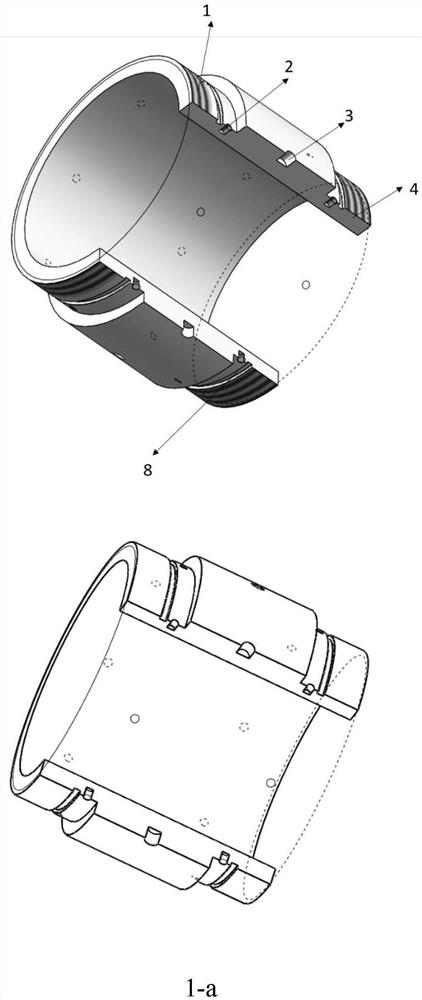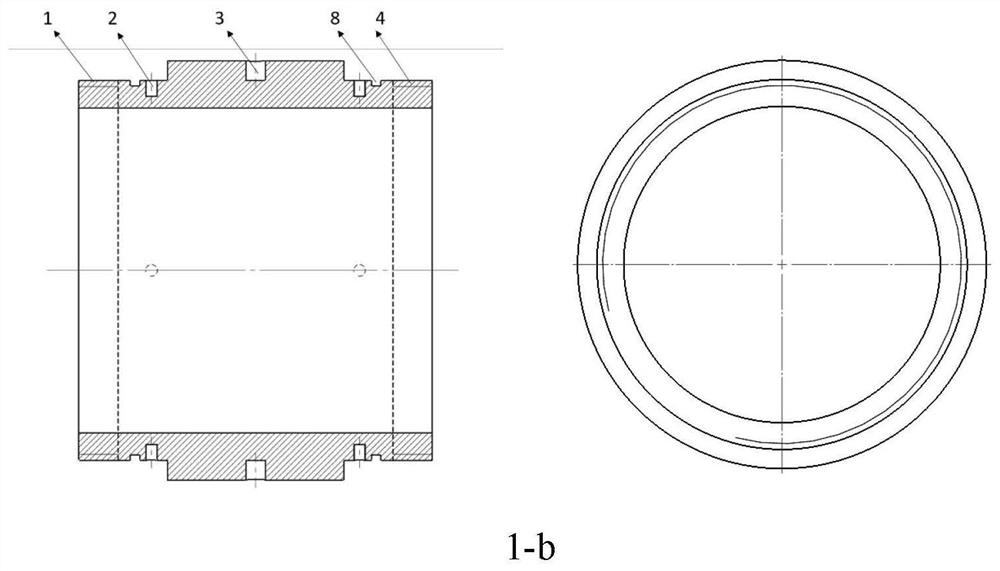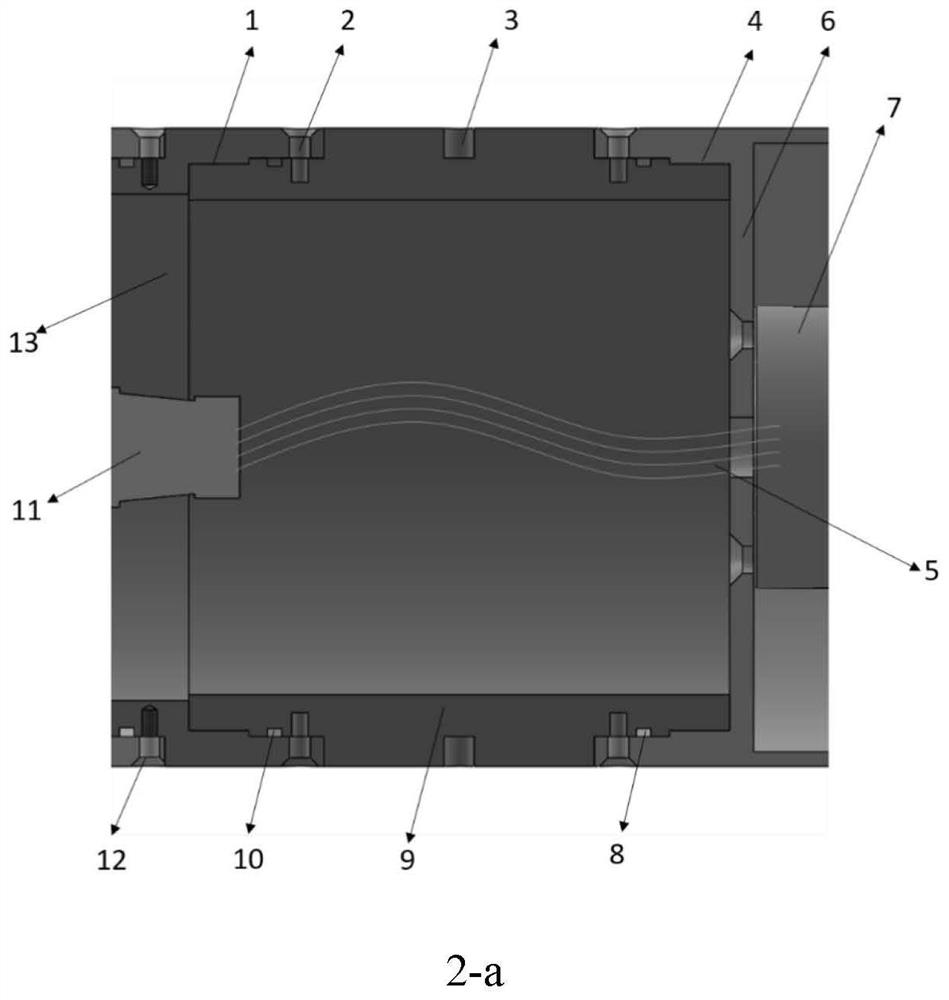Large-section connecting structure and tool for supercavitation high-speed navigation test prototype
A technology of connection structure and navigation test, applied in the direction of ships, etc., can solve the problems of safety accidents, deviation of the trajectory of the aircraft from the predetermined trajectory, complex structure, etc., and achieve the advantages of simple manufacturing process and process, reducing the difficulty of processing and manufacturing, and improving the test efficiency. Effect
- Summary
- Abstract
- Description
- Claims
- Application Information
AI Technical Summary
Problems solved by technology
Method used
Image
Examples
Embodiment
[0053] When the aircraft can withstand an axial load of up to 80g, when selecting the size of the connecting thread, the wall thickness of the thread is not less than 8mm, the thread length is not less than 15mm, and coarse threads are used as much as possible; 8 radial Evenly distributed set screws should be at least M3, and should not be too large, which would damage the shape of the aircraft; the thickness of the step surface of the connecting section should not be less than 6mm, if it is too large, the internal area of the connecting section will be too small, causing the internal Cables take up less space and can cause cable tangles.
[0054] The assembly of the connection structure of the present invention uses such as figure 2 As shown, the left-handed thread 1 at the front of the connection structure cooperates with the left-handed internal thread at the rear of the front cabin, and the right-handed thread 4 at the rear of the connection structure cooperates with th...
PUM
 Login to View More
Login to View More Abstract
Description
Claims
Application Information
 Login to View More
Login to View More - R&D
- Intellectual Property
- Life Sciences
- Materials
- Tech Scout
- Unparalleled Data Quality
- Higher Quality Content
- 60% Fewer Hallucinations
Browse by: Latest US Patents, China's latest patents, Technical Efficacy Thesaurus, Application Domain, Technology Topic, Popular Technical Reports.
© 2025 PatSnap. All rights reserved.Legal|Privacy policy|Modern Slavery Act Transparency Statement|Sitemap|About US| Contact US: help@patsnap.com



